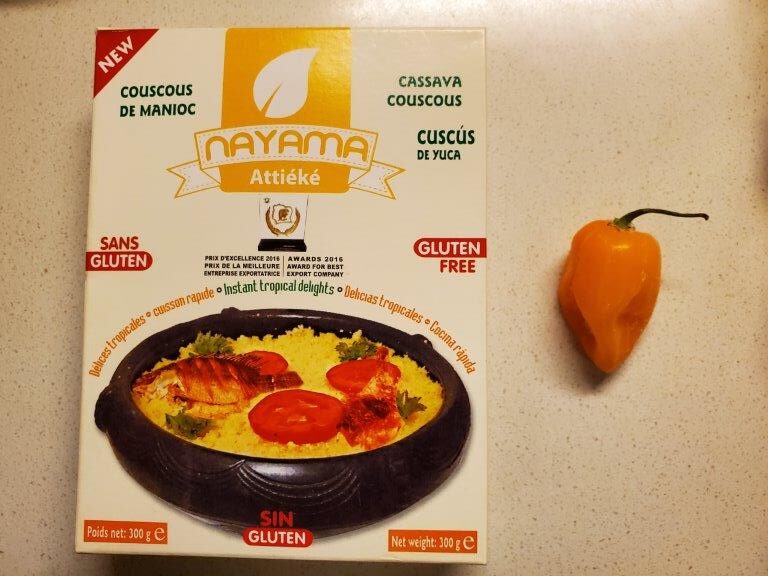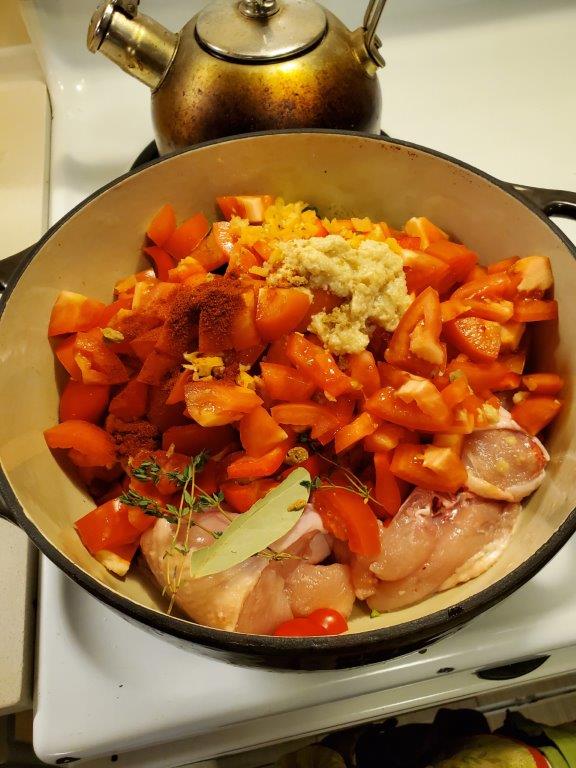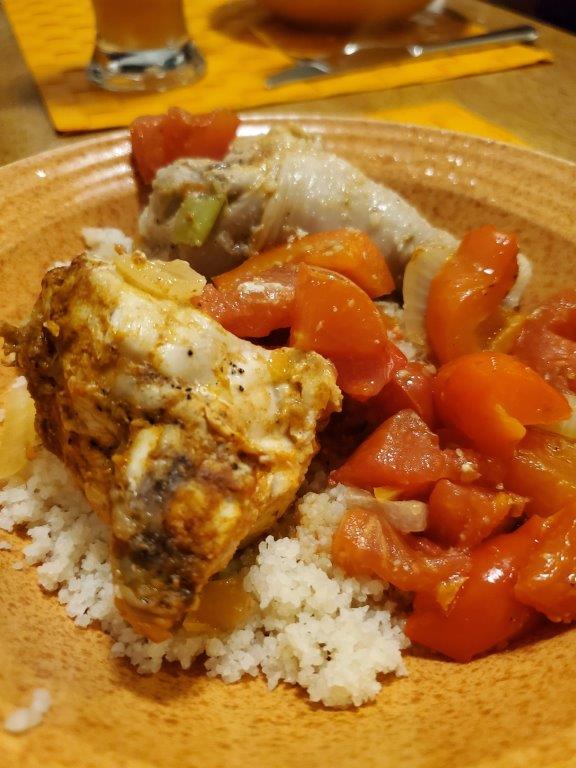This week we return to west Africa, and the country of Ivory Coast, or Côte d’Ivoire. (That diacritical is going to give me fits.) And for some reason, we’ll be using the local name for the alphabetization. We’re still not doing Germany under “D”, so consistency is not our strong suit.
This week’s meal wasn’t terribly complicated, and only required two exotic ingredients. Let’s meet them:
On the right is a pepper that we’ve been looking for for ages – a Scotch Bonnet. Habaneros make perfectly acceptable substitutes, and that’s what we’ve been doing, but because they’re common in both African and Caribbean cuisines, this makes something like the eighth recipe we’ve done that calls for them.
We finally found a source in the same small African grocer that provided the cassava leaves for Congo two weeks ago. And bonus – they had the national dish of Côte d’Ivoire: Attiéké! Attiéké is so iconic to this country that there’s been a recent move to have it designated a DOP (protected name), like Prosciutto di Parma. (Did you know that if it’s not actually from Parma, then it’s just sparkling ham?)
At any rate, what IS Attiéké? It’s couscous, but instead of being made of… (Google, Google, Google) seminola flour like regular couscous, it’s made of cassava starch. This gives it a pleasantly sour bite, and is without question my favorite thing I’ve eaten so far that is made of cassava.
But just because it’s the national dish, doesn’t mean that it is dinner by itself. As a main dish, we made a chicken stew called Kedjenu. And here is where I failed you, dear readers, in the photography department.
We bought an entire chicken. Whole. This is not a thing we normally do, and would have made a lovely photograph, don’t you think?
Anyway, here’s a picture of all the ingredients in the pot, sadly taken AFTER I dismantled the chicken.
Turns out, there’s nothing terribly unusual here: chicken, ginger, garlic, tomatoes, thyme, bay leaves, bell pepper, white and green onions, and one of them there Scotch bonnets. Take note – that’s a ratio of ONE Scotch bonnet to ONE entire chicken.
Kedjenou (probably) literally means “shaken”, so the idea is that you’d put all these ingredients into a tightly sealed, heavy pot, and then instead of opening it and letting all the moisture escape, you’d shake the pot periodically during cooking. And that’s what we did – this Dutch oven is pretty heavy and has a tight fitting lid, so a quick stir, and then everything just went in the oven for an hour. Easy.
The attiéké was even simpler. This dried version (you can also get it frozen) just required a 1:1 ratio with water and a quick zap in the microwave. That’s probably not the most traditional method, but it’s what the box said to do, and who am I to argue with packaging? (The box also said this product really was made in Côte d’Ivoire, so bonus authenticity points there.)
After a while, the kitchen smells amazing, and out comes the stew:
The paprika and tomatoes have turned the sauce a lovely red color. Here’s the whole package:
I like to think we’re getting better at the food porn here.
This dish was delicious, and the chicken was extremely moist after being sealed in the pot the whole time. It was also SPICY. Scotch bonnets are not fooling around y’all. (And since we both love spicy food, that’s fine with us!)
Not every one of these international meals has to be a big project! This one was simplicity itself, and could easily be made on a weeknight. There’s no rule that says you couldn’t just buy a package of chicken parts if you didn’t want to bother slicing it up yourself. And while attiéké may be a bit challenging to find, it would also work just fine with rice or standard couscous. (That said, since WE know where to find it, we’ll be making it more in the future.)
With the holidays coming up, we may defer our next country until Christmas itself, since we have a real expert advising us on our next entry – Croatia!
Recipe:
Kedjenou




